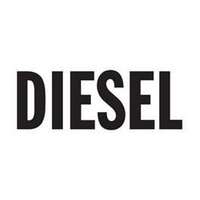Engine Downsizing Poised for Increased Penetration across Gasoline Engines, Finds Frost & Sullivan
 |
Increasing Preference for Smaller, Fuel-efficient Cars with Lower CO2 Emissions to Promote Engine Downsizing
LONDON--May 9, 2012: Engine downsizing, which has been a major trend in European diesel engines over the past decade, is poised to have a major impact on gasoline engines, which will witness the trend that diesel engines did in terms of engine downsizing and turbocharging 10 years ago. This trend will also have a positive impact on the demand for technologies supporting downsizing such as turbochargers and variable valvetrain.
New analysis from Frost & Sullivan (Frost Automotive), 2011 Original Equipment Manufacturers Strategies for Passenger Vehicle Engine Downsizing in Western Europe , finds that suppliers with complete powertrain development and benchmarking capabilities will gain significance.
"Due to comparatively lower CO2 emissions, diesel engines will not face a challenge in complying with CO2 limits; hence, the limitations in downsizing diesel engines will not be an issue," notes Frost & Sullivan Senior Research Analyst Bharath Kumar Srinivasan. "Reducing the level of downsizing will also help control NOx emissions from these engines, which are being tightened for Euro 6 (to be enforced in 2014)."
The number of cylinders in gasoline engines is likely to decrease only for engines below 1.2 litres. About 35-38 percent of gasoline engines are likely to be turbocharged by 2018. This high level of turbocharging by European OEMs is likely to help in the market growth of boosting technologies.
Legal regulations and end-consumer environmental awareness will motivate the sales of vehicles with small engines. For example, the car scrappage schemes in 2009 reduced the average displacement of engines in Western Europe. Such initiatives will help boost engine downsizing.
The addition of supporting technologies such as turbochargers and variable valvetrain technologies are expected to drive costs and this is likely to impact take-up rates in cost-sensitive segments.
Downsizing engines results in lower torque output from the engine and, hence, lower transient response. Variable geometry turbocharging (VGT) is a good solution for better torque output, however, introducing VGT at a low cost for gasoline engines will be a challenge.
"In diesel engines, aggressive downsizing results in higher specific load and, therefore, increased NOx emissions," explains Srinivasan. "This, in turn, will have an effect cost as NOx after-treatment technologies such as SCR are expensive."
OEMs are likely to experience higher sales of low CO2 emitting vehicles and thus pass on the tax benefits to the end-consumer. This offers excellent scope for selling low emission models such as Ford Focus, Volkswagen Polo, Volkswagen Golf and Opel/Vauxhall Corsa.
"With improved emissions and performance, without drop in fuel economy, being the key drivers, engine downsizing is all set to have a major impact towards achieving emissions of <120 g/km CO2 in two-thirds of new car sales by 2016," concludes Srinivasan.
2011 Original Equipment Manufacturers Strategies for Passenger Vehicle Engine Downsizing in Western Europe is part of the Automotive & Transportation Growth Partnership Service programme, which also includes research in the following markets: 2010 Europe Consumer Attitudes and Perceptions toward Sustainability, Environment, and Alternative Powertrains - Key Findings on Transmission Technologies and Comparative Analysis of European OEMs Powertrain Strategies for Euro 6 Compliance. All research included in subscriptions provide detailed market opportunities and industry trends that have been evaluated following extensive interviews with market participants.


